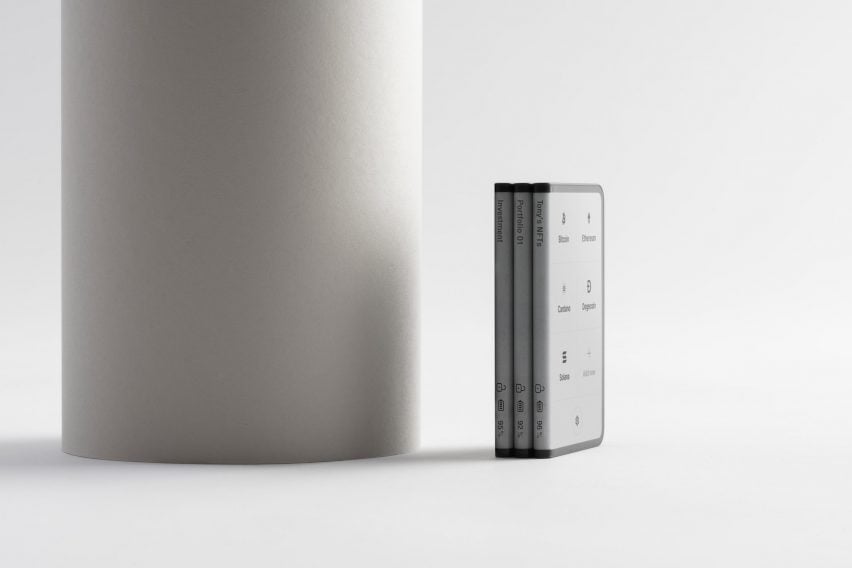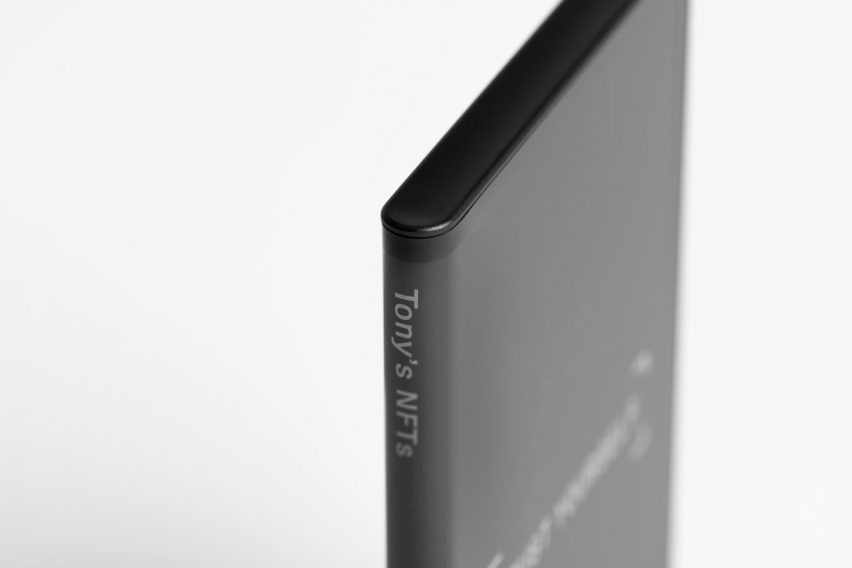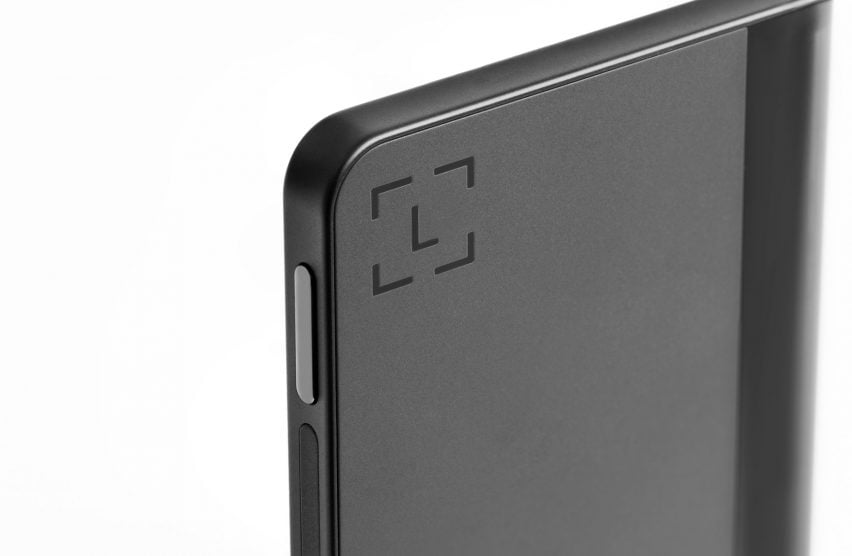Design studio Layer collaborated with tech brand Ledger and designer Tony Fadell to produce Ledger Stax, a screen-wrapped credit card-sized device for storing cryptocurrency and NFTs.
Ledger Stax is a hardware wallet – a device that stores the digital keys needed to encrypt and decrypt crypto assets offline, where they are considered most secure. Users can also view and send their cryptocurrency and non-fungible tokens (NFTs) through the device.
Layer developed the product with the French company Ledger, which previously designed the Nano hardware wallets. The initial idea came from Fadell, who led iPod development at Apple and co-founded Nest Labs, now Google Nest.
Ledger Stax is built on the same architecture as the Nano series, but has a unique shape that Layer says improves the experience of interacting with cryptocurrencies and NFTs.
Its distinguishing feature is an e-ink display that wraps around the front surface and spine of the device, enabling intuitive touchscreen interaction and, given the technology’s energy efficiency, a battery life of several weeks or months.
Layer founder Benjamin Hubert sees the e-ink screen as an “underutilized” technology that perfectly matches Ledger Stax’s text-heavy needs and allows it to have a different kind of design language, free from expectations. set by phones.
Photos or NFTs can be displayed in grayscale on the lock screen, allowing the device to be personalized, which is about the same size as a credit card but a bit thicker, with a slice six millimeters wide.

The design also invites multiple devices to be stacked like physical currency or conventional ledgers. Adjacent devices will stay magnetically together, giving users the ability to organize their wallets on separate devices while clearly identifying them from labeling on the back.
In addition to allowing users to manage their crypto assets, Ledger Stax can be used to explore Web3 applications through the Ledger Live app, which also connects the device to a smartphone.
The device has an aluminum casing which Layer says gives it a reassuring weight in the hand and underlines its secure nature. Its soft edges allow for easy handling.
In addition to the touch screen, it has a single button to turn the device on and off, lock and unlock the screen.

Layer has been working on Ledger Stax for two years. Hubert believes that although the value of cryptocurrencies has fallen in recent months, now has never been a better time to launch the product, as it offers people an alternative to using centralized exchanges for storage.
“The crypto market ebbs and flows aside, the need for people to understand how and why they should take their assets into their own hands has increased following recent news,” Hubert told Dezeen. “A popular phrase in the crypto world is ‘not your keys, not your coins,’ which refers to the need to own the private keys associated with your funds.”
“Never has it been more appropriate with the struggles that a number of centralized exchanges have faced – notably the collapse of FTX – and the tragic fallout for the average person,” he continued.
“Ledger’s secure architecture will continue to lead the way in this regard, and Ledger Stax couldn’t come at a better time.”

According to Hubert, its e-ink display also makes Ledger Stax more durable than many other consumer devices because the technology uses less power and only when it refreshes, rather than constantly like O-LED displays tend to. do it.
Durability is an area where both cryptocurrency and NFTs have come under criticism in the past, due to the amount of computing power they require. However, Hubert says more energy-efficient solutions are slowly coming forward, citing for example Ethereum’s move from using proof-of-work to a proof-of-stake model earlier this year.
“As crypto continues to mature, there will likely be more of this – and there are already many other players in the space that offer sustainability as part of their ethos,” Hubert said.

The designer, who has what he describes as a “moderate investment” in the Ethereum cryptocurrency, says the project aligned with Layer’s interest in working with technologies that enable and complement cultural shifts.
“Like any market, Ethereum has its ups and downs but I think it has a bright future,” Hubert said. “It’s exciting to be part of an emerging financial market, and working with Ledger has only reinforced my belief in the potential of crypto.”
Ledger Stax is Layer’s second crypto product after Trove, a system incorporating a watch-like wearable device. The studio works steadily in the tech space and has also recently designed smart glasses for Viture and a meditation headset for Resonate.



